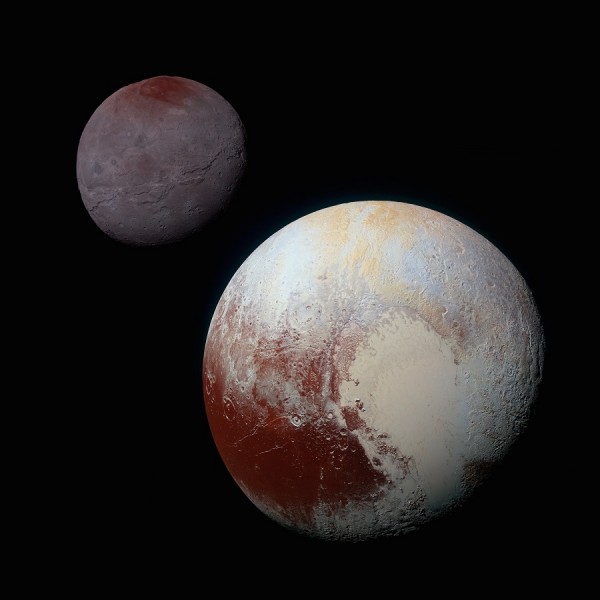By Ana Verayo, | February 21, 2017

Pluto’s ice-covered “heart” is clearly visible in this false-color image from NASA’s New Horizons spacecraft. (NASA/JHUAPL/SwRI)
NASA is planning to get Pluto back into the solar system as a proper planet, thanks to the efforts of NASA's New Horizons head mission scientist, Alan Stern. As the principal investigator of the historic Pluto flyby mission in July 2015, Stern and his team have submitted a proposal to the International Astronomical Union to re-classify the dynamic, dwarf planet.
Like Us on Facebook
Stern along with his NASA New Horizons team have written to the International Astronomical Union stating that if Pluto is not a planet anymore, then why send the New Horizons spacecraft to explore Pluto? He writes, in order to mitigate an unfortunate perception, we are proposing for a new definition of Pluto to a planet, which also has historical precedence.
The team also explained that in keeping with both scientific classification along with the peoples' intuition about Pluto, we therefore propose a geophysical based definition of a "planet". This means that the team wants to emphasize the intrinsic physical qualities of Pluto rather than its extrinsic orbital properties.
The New Horizons team believe that a planet should be redefined as a sub-stellar mass body which never went through nuclear fusion like stars do and possesses enough gravitational forces that assumes a spheroidal shape regardless of its orbital parameters. In simpler terms, Stern suggests that planets should be defined as round objects in space that are smaller than stars.
International Astronomical Union's current definition of a planet is that if a celestial object that orbits around the sun, has sufficient mass that can support its self-gravity to overcome rigid body forces, to maintain a nearly round shape and it has cleared the region around its orbit.
Stern and his team point out that this definition is highly limiting due to recognizing planets that only orbit around the sun and not orbiting other stars or those that do not possess a host star, freely roaming around the galaxy.
In addition, "zone clearing" means that all the planets in the solar system do not meet the criteria of being a planet. Researchers explain in the proposal that this zone clearing suggests that planets should be large and distant enough within its zone. For example, a Mars-sized planet in the Kuiper Belt would not possess a clear zone.
Apart from Pluto, there are also additional several dwarf planets in the solar system that are added on the list, including Ceres, and more moons of Earth, Jupiter and Saturn as well. This would mean that our solar system would include almost a hundred of these "planets."
-
Use of Coronavirus Pandemic Drones Raises Privacy Concerns: Drones Spread Fear, Local Officials Say

-
Coronavirus Hampers The Delivery Of Lockheed Martin F-35 Stealth Fighters For 2020

-
Instagram Speeds Up Plans to Add Account Memorialization Feature Due to COVID-19 Deaths

-
NASA: Perseverance Plans to Bring 'Mars Rock' to Earth in 2031

-
600 Dead And 3,000 In The Hospital as Iranians Believed Drinking High-Concentrations of Alcohol Can Cure The Coronavirus

-
600 Dead And 3,000 In The Hospital as Iranians Believed Drinking High-Concentrations of Alcohol Can Cure The Coronavirus

-
COVID-19: Doctors, Nurses Use Virtual Reality to Learn New Skills in Treating Coronavirus Patients







